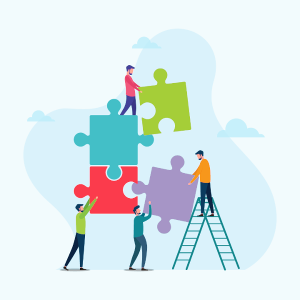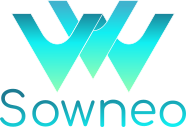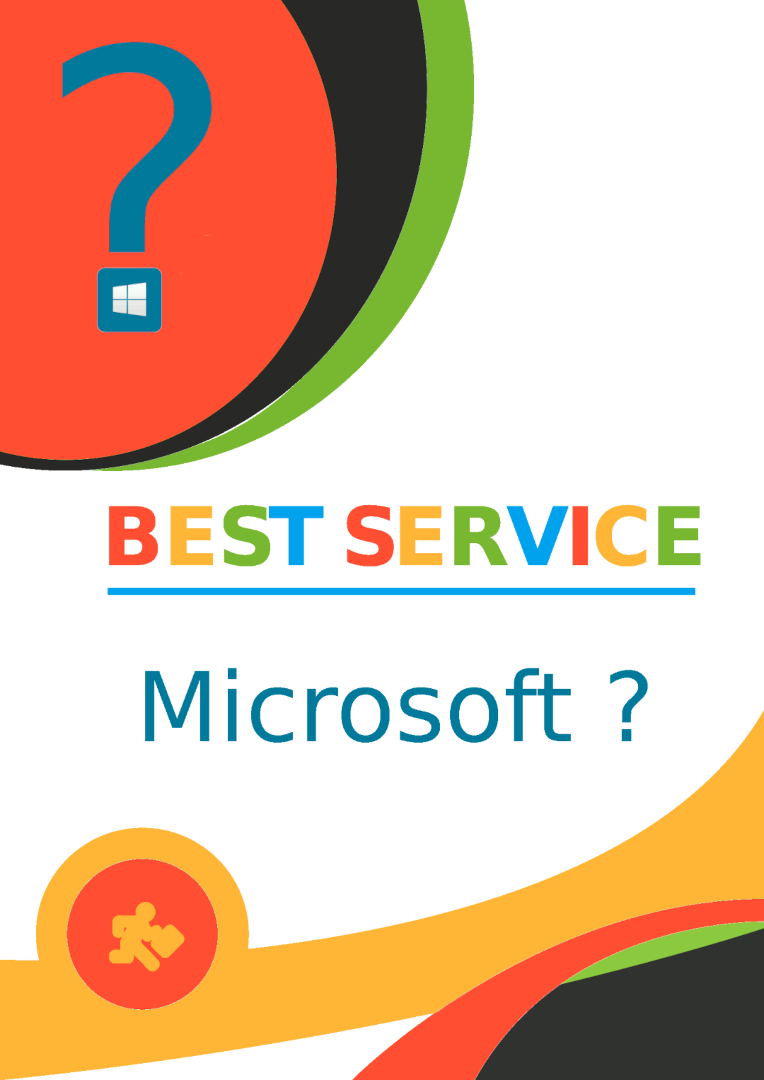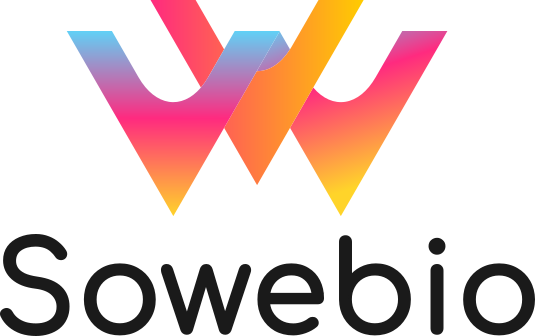Free Software, the Unknown
After having stated in the previous part that Microsoft is a symbol, the title of this article remains deliberately ambiguous.
Is it about a society without Microsoft in the broad sense, or a commercial company not using Microsoft tools? Probably both, as this is an ethical question. And what is the origin of the question? Certainly quality, and we will see that the answer was freedom.
The First Free Software
History will remember that the first Free Software was created by Richard Stallman to solve a quality problem. A commercial software controlling a printer was defective.
Facing the inappropriate attitude of the publisher of the defective software, Richard Stallman decided to write a replacement driver and to make it freely available to everyone, with the condition that the community would contribute its own improvements freely back to the software. Free Software was born.
Today, Free Software is everywhere. From the Internet to Android, through Darwin—the base of Apple’s macOS—many Microsoft productions, but especially the Linux system, the BSD family of Unix-based systems, and finally tens of thousands of free software created for users.
The global Free Software community represents millions of contributors and thousands of successful companies.
History will also remember that this phenomenon is probably the first global human collaboration, beyond cultures, languages, and countries.
Collaborative and Evolutionary Spirit
Free Software is proof that people, regardless of diploma or background, through the simple meritocracy of the work provided, can organize themselves and collaborate effectively on very complex projects, in a Darwinian movement, in order to obtain the best possible solutions.
No commercial company, not even Microsoft, can reach the scope and efficiency of such a movement.

The Free Software Economy
Commercial model versus Free Software
There is no opposition between the commercial model and Free Software: the two concepts are complementary.
It is common to base a company on a Free Software project. The company offers support to other businesses. The free project guarantees sustainability for users.
Ultimately, a Free Software project can only die out due to the absence of users.
A company can also decide to support a Free Software project because of its quality or popularity, as the investment will be lower and the opportunities greater. IBM ported Linux to its mainframes and recently acquired RedHat, the publisher of the Linux distribution of the same name.
Conversely, the Free Software community can acquire a commercial software like Blender to free it: a dedicated foundation created in 2002 collected, in seven weeks, from the community, the €100,000 needed to acquire the rights.
The Ambiguity of Free
The free nature of Free Software, as an economic choice, can be a source of misunderstanding.
One should never choose software because it is free or open source or free software, but rather based on its objectives.
Today, 98% of everyday needs are covered by Free Software. For the remaining 2%, the right approach is to acquire the most appropriate commercial software.
Sowebio thus uses three commercial software programs on Linux, in paid versions, because no free software met the need precisely: DaVinci Resolve (professional video editing), Sublime Text (developer editor), and TreePad Business (tree-structured information manager).
Free is also, as a precise definition, a source of ambiguity.
We must distinguish between freeware (sources are not available, no sustainability is guaranteed), open source software (sources are not freely usable, no freedom is offered), and Free Software.
Free access is certainly a fundamental aspect of Free Software but should never be overestimated. As with commercial software, there will be training and maintenance costs.
Free is only apparent and represents only the acquisition cost. On the other hand, Free Software is a major source of hidden savings.
Other Benefits of Free Software
After quality, freedom, and free acquisition, Free Software also offers other decisive advantages in the medium and long term.
Sustainability of Solutions
Commercial publishers create and discontinue their products according to their strategies. They change the interface, file formats, pricing, and license models as they wish.
In contrast, Free Software is a haven of stability and respect for users. It is common today to use Free Software that has existed for more than twenty years: the name hasn't changed, the original file format is still compatible, the user interface doesn't change with every version, and users have a voice.
Incidentally, the initial training investment is preserved.
Independence of Solutions
Free Software often offers the freedom of portability.
Portability is the ability of software to run regardless of the operating system. Software like LibreOffice, Firefox, or Videolan naturally works on Windows, Mac, Linux, and Android. The user is no longer tied to a system to use their favorite software.
Freely Accessible Training and Maintenance
Free Software freely provides online self-training materials for users and, for IT service providers, the maintenance documentation of the software.

The Transition to Free Software
The Human and his Tools
In every field, people come first. Software is only a tool.
Microsoft has been offering an office toolbox for nearly forty years. Oracle was long considered essential for databases. A majority of graphic designers are convinced that it’s necessary to believe in Adobe and its prophet, Photoshop.
Others claim that the only alternative to a Windows PC is a Mac.
Everyone feels comfortable with the tools they prefer.
Irrationality is the rule, and Darwin will do the sorting.
After using Microsoft systems—but having anticipated the shift by primarily using Free Software under Windows—Sowebio became, in 2018, a company built on Free Software.
Sowebio no longer uses a single Windows system or any Microsoft software.
The Search for Peace
The decision was made following certain events and usage changes that made maintaining a Windows-based system increasingly time-consuming, insecure, and disrespectful of personal data:
- The 2017 waves of ransomware—a threat still active today;
- Vulnerabilities and intrusion tools “lost” by the NSA, which helped hackers improve their methods;
- Strange, non-destructive ransomware attacks that seem like rehearsals for larger operations;
- Deception involving Windows Seven Pro: some important security features, although present and configurable without error messages, only functioned with Seven Ultimate or Seven Enterprise;
- The need for tight control over Windows updates to prevent data-harvesting updates targeting users who refused to move to Windows 10;
- The technical necessity—had Sowebio remained on Windows—to switch to Windows 10, a system even more intrusive regarding personal data and enforcing a burdensome update process;
- Increasing security demands due to evolving threats;
- The poor quality of built-in Windows antivirus solutions, requiring the use of additional tools;
- GDPR and other similar international regulations;
- The growing adoption of Free Software by users;
- System unification, since our servers also run on Linux.
Sowebio workstations now run on GNU/Linux Ubuntu Long Term Support with full disk encryption, and all our servers run on GNU/Linux Debian.
These changes have improved Sowebio’s GDPR compliance, workstation security, and system customization. Productivity is now higher, and we spend less time maintaining our systems.
Having the same OS for both workstations and servers is a major advantage for development. VPN switching is faster and more stable.
Linux's hardware compatibility is outstanding—even with unusual setups:
- 43-inch 4K resolution development stations;
- 12-inch Dell Latitude ultrabooks with 4G, GPS, and smart card readers. Switching to Linux significantly improved battery life, and the 4G card is natively recognized;
- Multifunction devices like A4 PostScript production laser printers and A3 PostScript color copiers;
- Battery-powered portable printers;
- Professional colorimeter for calibrating displays and both fixed and mobile projectors.
Finally, GNU/Linux Ubuntu’s performance allowed us to avoid replacing our management workstations, mostly 2011 Dell Optiplex professional machines equipped with solid Intel Quad-Core processors. The OS switch was also an opportunity to install high-quality SSDs, a multi-display graphics card, and upgrade the RAM to 8 or 16 GB. This extended their lifespan by five years.
A Company Without Free Software?
Some companies are not ready for Free Software or simply cannot adopt it. It does come with a cost—sometimes minimal, sometimes higher at the beginning.
Security, viruses, and ransomware are still a sword of Damocles, and the 2017 attacks resulted in billions of dollars in damages. Today, ransomware waves continue unabated. Thousands of multinational corporations, cities, local and international organizations, and millions of small and midsize businesses have been hit. Security on Windows is a serious concern.
A company with a deeply rooted Windows culture won’t buy into this article’s message and will argue that Windows can be secured—which is true—and inexpensively—which is false. Another company that sees IT as a nuisance won’t even understand the discussion. A third, that relies on highly specific Windows-only software, will simply have no choice.
Free Software also has a cost, although it’s nothing compared to the cost of a Microsoft-based architecture. While a GNU/Linux Ubuntu system provides an excellent user experience—comparable or even superior to macOS—and unmatched hardware support, certain aspects like printing with multifunction devices and handling sleep, hybrid sleep, and hibernation on laptops often require additional setup.
You also need to choose Free Software equivalents for Microsoft software. Sowebio maintains an internal equivalency manual covering office software, multimedia creation, utilities, and development tools. Implementing these often results in surprisingly impressive outcomes.
Migration is easier for a new company than for an existing one, often locked into proprietary business solutions and tied to a significant amount of historical data. In such cases, the best approach may be—at least initially—to keep Windows while gradually replacing Microsoft applications with Free Software alternatives.
All of these issues are non-trivial. It’s necessary to evaluate the company’s entire information system and then decide on the best path forward.

Epilogue
Sowebio’s objectives were to improve: personal data protection, security, quality, long-term sustainability, and ease of deploying systems and software, while keeping all existing hardware and peripherals.
The main triggers were the European data protection regulation (GDPR), performance gains, and reduced maintenance time, followed by savings on software and hardware investments.
The GAFAM companies see our personal data as priceless and offer attractive, “free” services to reel us in. But in a business context—using SaaS (software-as-a-service) and the Cloud (remote servers)—costs soar, dependence on third parties increases, and control over data decreases. You can live with that—or you can do things differently. It’s a choice.
Sowebio chose to reduce costs and increase quality. This reclaiming of our company’s digital sovereignty was prepared over six months. The investment paid for itself in the first year through the near disappearance of incidents, the elimination of most maintenance tasks, faster deployment of new machines, and reduced hardware and software expenses. Finally, automatic updates are seamless and no longer slow down operations.
Freed from these constraints, and benefiting every day from this choice, we now dedicate all our energy and creativity to serving our clients.


